Die Galerie ist ab 8. Februar wieder geöffnet, letztmalig kann die Ausstellung von montags 8. bis samstags 13. Februar, von 14 – 19 Uhr und nach tel. Vereinbarung besucht werden. Wir freuen uns über Ihr Kommen.
Open again from Monday 8th to Saturday 13th February, 2 to 7 p.m. We look forward to seeing you there.
Covid 19 restrictions:
Besucher/innen müssen FFP2-Masken tragen und zu weiteren Personen 2 Meter Abstand halten.
Visitors must wear FFP2 masks and keep a distance of 2 meters from the next visitors.
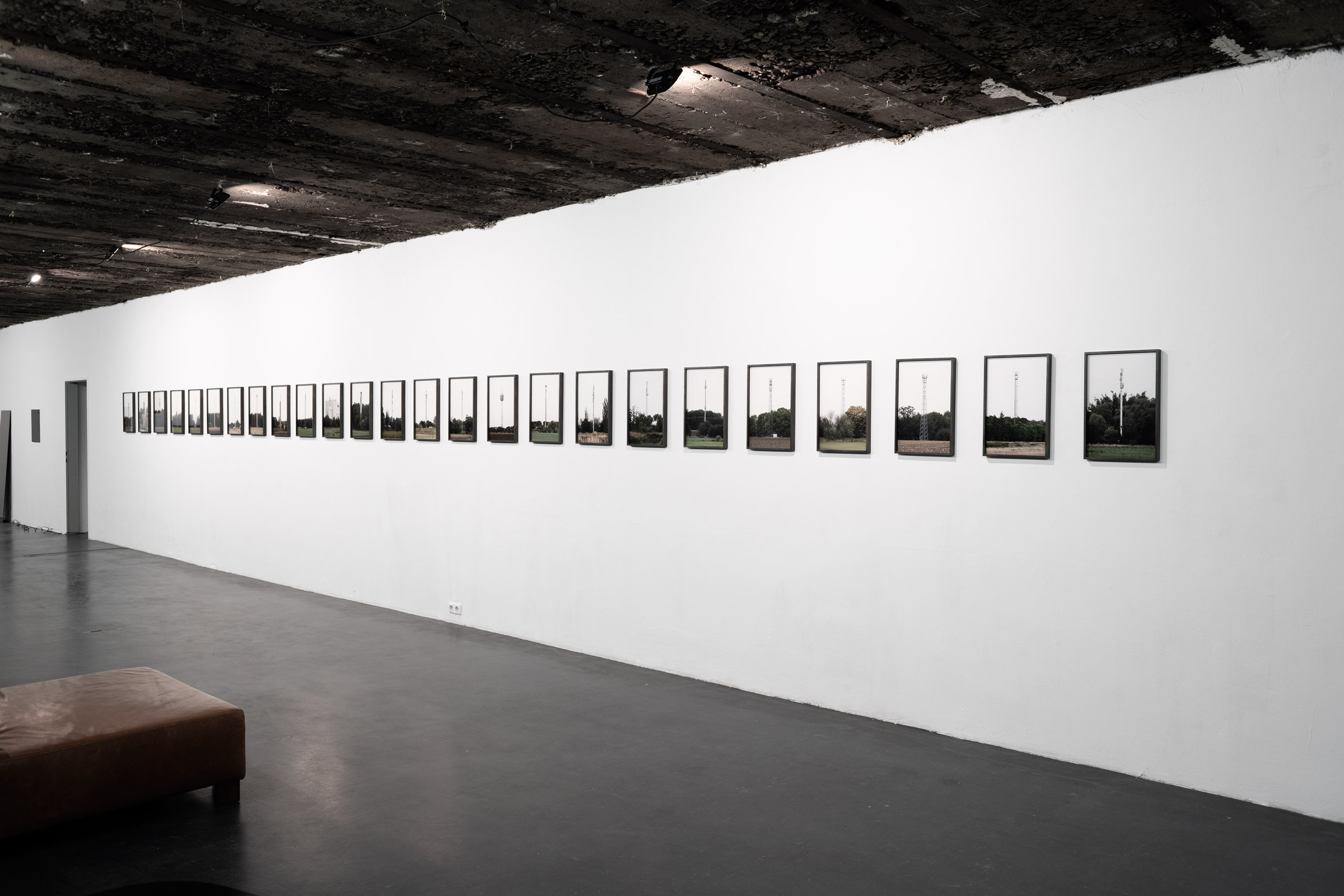
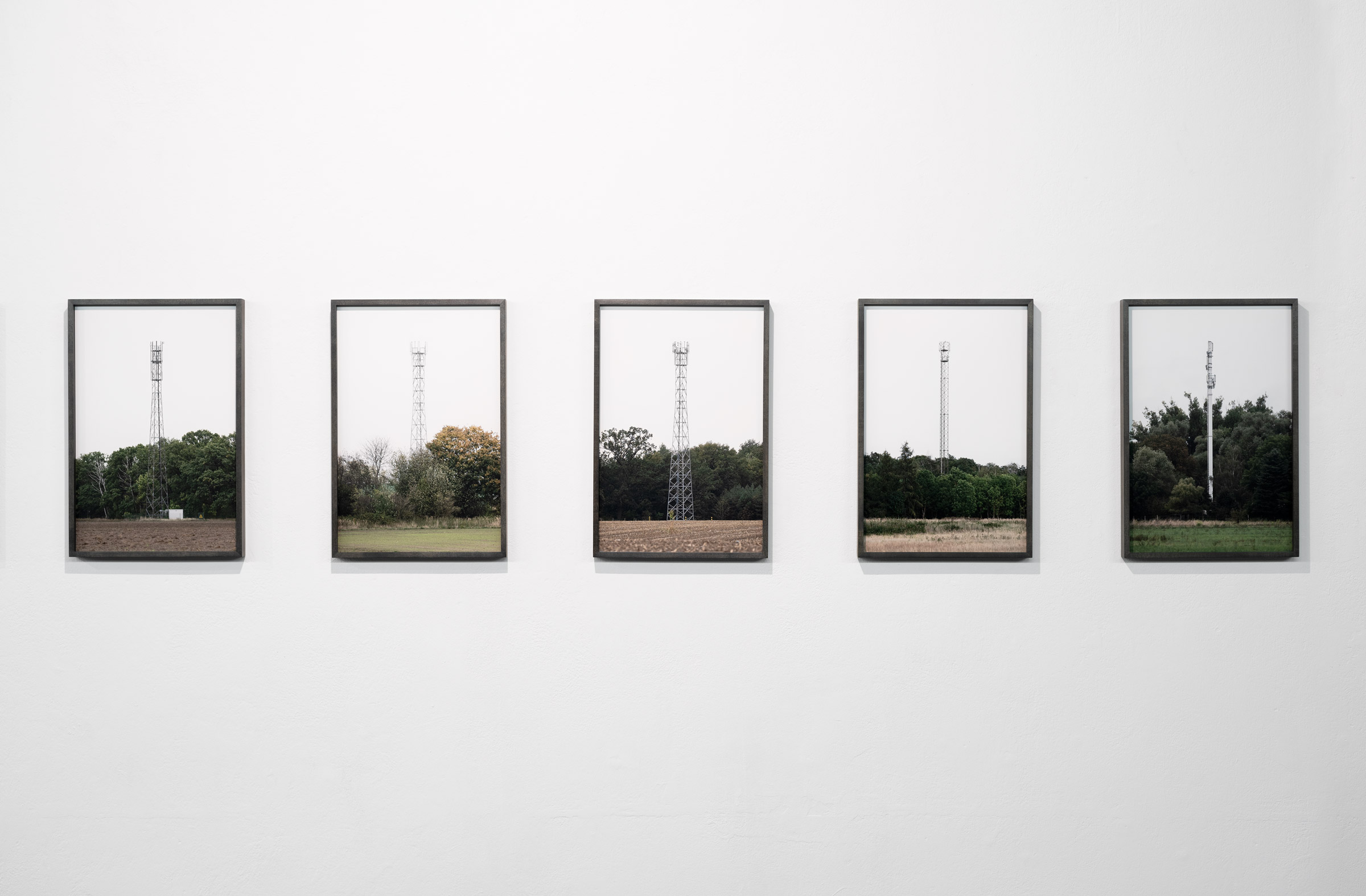
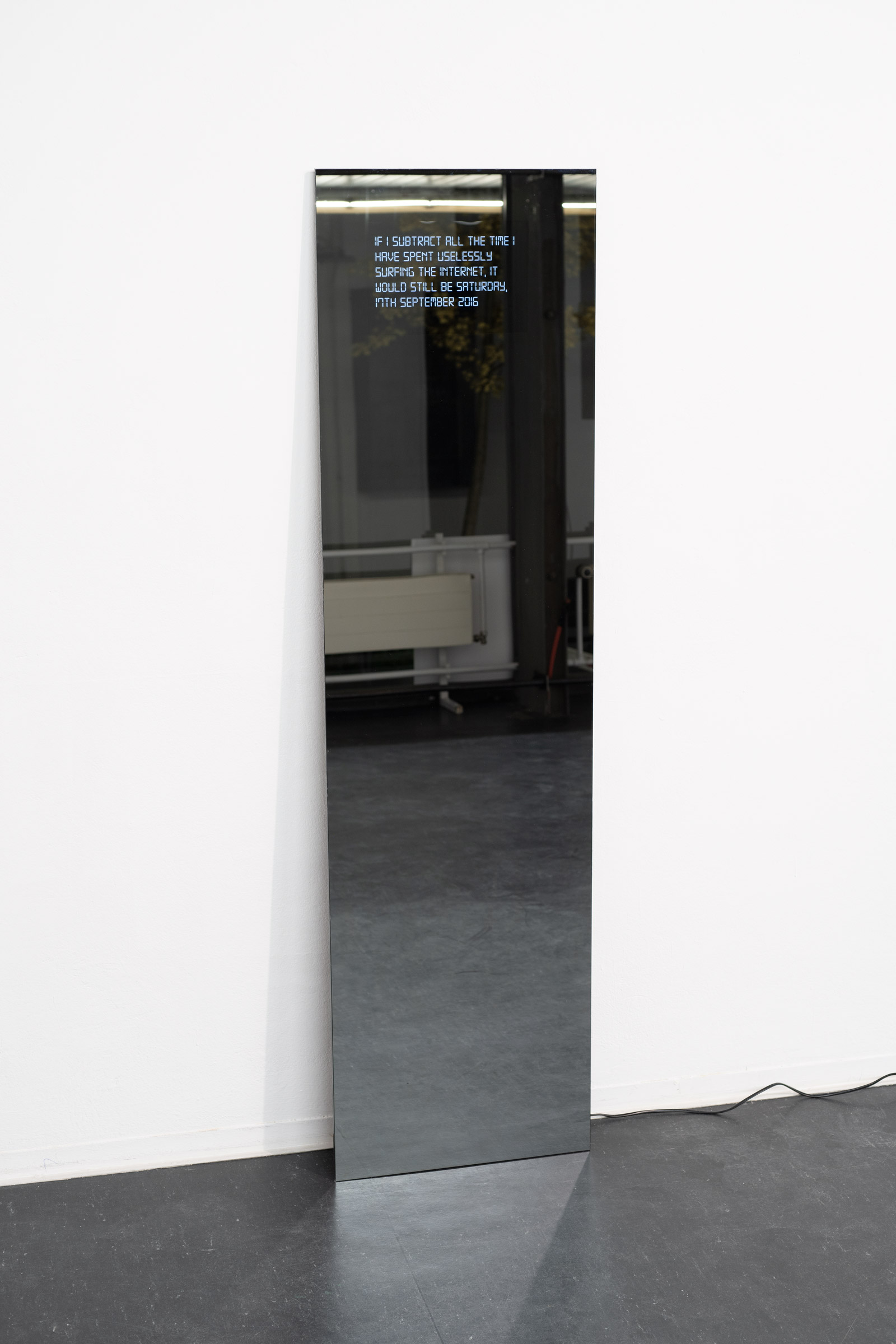
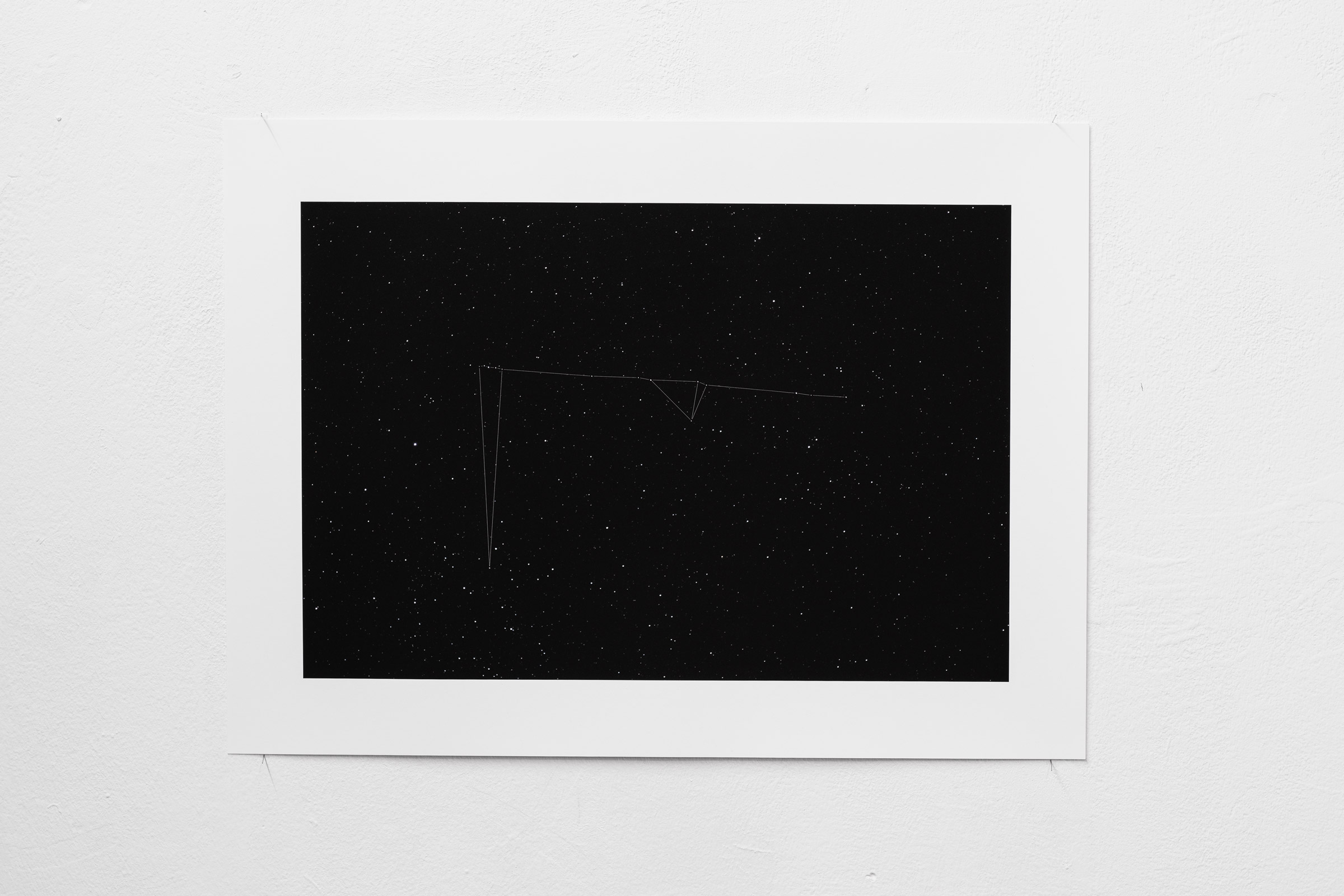
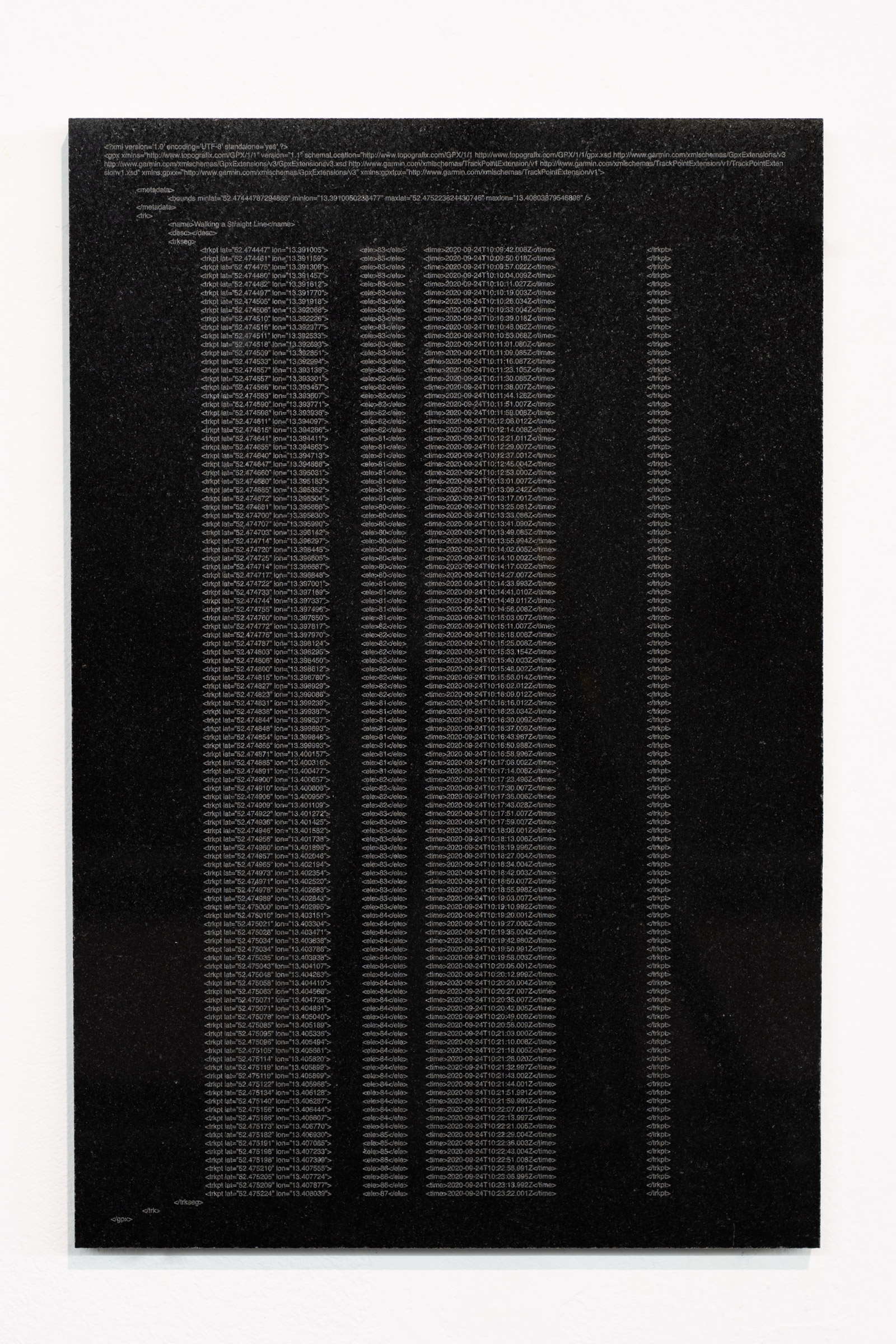
RUBEN AUBRECHT
Informationsverarbeitungsprotokolle,
Aufzeichnungssystemanalysen –
und ein bisschen Selbsttracking
Als Richard Long 1967 erstmals „A Line Made by Walking“ präsentierte, exemplifizierte der junge Künstler jene protokollarischen Systeme der Aufzeichnung, die in konzeptuellen künstlerischen Praktiken bis heute zum methodischen Standard gehören. Mit der Fotografie einer nicht näher bestimmten Wiese in der Nähe Londons, die Long in Form einer geraden Linie ausgetreten hatte, dokumentierte er nicht nur das Ergebnis einer Aktion, die heute zu den Ikonen der Land Art gehören. Schon mit der Performance an sich zeichnete er die Zeit auf, die verging, um den Boden mit seinen Schritten zu markieren. Darüber hinaus verarbeitete er seinen eigenen Körper, dessen Gewicht und Bewegung verantwortlich für das Plätten des Grases waren, zu Information. Die Beliebigkeit des Ortes – diese Wiese irgendwo im England der 1960er-Jahre – verstärkte zudem die Reflexion auf ein Koordinatensystem, das sich aus dem Zusammenwirken der Dreiheit von „Ich“, „Hier“ und „Jetzt“ speiste.
Knapp 60 Jahre später und mit Themen wie digitaler Überwachung, Netzwerkkapitalismus und zuletzt wieder verstärkt kursierenden Verschwörungstheorien im Hinterkopf, hat sich nicht nur die geopolitische Situation verändert, auch die Medien der Aufzeichnung sind unter anderen Vorzeichen zu begreifen. Dennoch lässt sich Ruben Aubrechts künstlerische Praxis mit der von Richard Long zusammenführen: „Walking a Straight Line“ lautet der Titel des ersten Werks einer mehrteiligen Serie, die von einer App aufgezeichnete GPS-Trackingdaten nutzt, um eine gerade Linie sowohl aus dem globalen Netzwerk an Informationen herauszuschälen als sich mit einer Linie in ebendieses globale Netzwerk wieder einzuschreiben. Die so genannten Metadaten, Textelemente, die in bestimmten Abständen Zeit und Ort der Bewegung des Mobiltelefons Ruben Aubrechts beschreiben, hat der Künstler in eine schwarze Steinplatte mit polierter Oberfläche lasern lassen. Einem ausgeschalteten, schwarz-spiegelnden Display gleich, sind auf der Tafel vier parallel geführte Textzeilen zu sehen, die mit etwas Abstand betrachtet und ohne Fokus aus die einzelnen Buchstaben, gerade Linien ergeben – jene Linien, die Ruben Aubrecht, genau wie Richard Long, zu Fuß gegangen ist, um sich selbst in virtuellem Raum und Zeit zu situieren.
Dass die Idee von Virtualität, mit der das Werk Ruben Aubrechts häufig operiert, durchaus handfest und materiell werden kann, zeigt die Fotoserie: „15 x 15 km“. Für die 25-teilige Arbeit hat der Künstler ein Planquadrat von 15 × 15 Kilometern an einem nicht näher definierten Ort außerhalb von Berlin bestimmt und alle Sendemasten in diesem Areal fotografisch dokumentiert. Als graue Beton- oder Stahlkonstruktionen wirken diese meist freistehenden Architekturen wie Fremdkörper inmitten idyllischer Landschaften, wo sie die Endgeräte der Benutzerinnen und Benutzer auch noch im entlegensten Winkel mit Daten und Informationsflüssen versorgen: „Janusköpfige Gebilde“, wie Ruben Aubrecht es formuliert, „die unbegrenzten Zugang zu Wissen und Information versprechen und gleichzeitig Instrumente der totalen Kontrolle sind.“ Die standardisiert frontal aufgenommenen Farbfotografien der Serie führen schon allein aufgrund ihrer Konzentration in einem recht überschaubaren Areal von nur 225 Quadratkilometern vor, wie massiv die Infrastruktur ist, die wir benötigen, um uns jederzeit und allerorts durch das digitale Netzwerk zu klicken. Aber mehr noch, legt die Menge an Sendemasten auch offen, welcher Aufwand von offizieller Seite betrieben wird, um die nötigen Strukturen für flächendeckende Transparenz zu gewährleisten.
Wie weit die Bedeutungen des Begriffs „Transparenz“ auseinander gehen können, von gläsern-durchscheinend bis milchig-verschwommen, also von durchsichtig bis hin zum Gegenteil, wird in Ruben Aubrechts „Cookies“ evident: Die Webseite von Monopol, das selbst ernannte Magazin für Kunst und Leben, benötigt wie jedes andere online verfügbare Medium auch die Zustimmung seiner Leserinnen und Leser zur Datenverarbeitung von Cookies und anderen Technologien, die es ermöglichen, ihren Besuch zu registrieren und zu speichern. Einmal angeklickt, meist ungesehen weil zeitaufwändig und deshalb lästig, produzieren wir täglich mehrfach unsichtbare Listen über Listen an Zustimmungserklärungen, die sich in Ruben Aubrechts Buch mit Sätzen wie „ Protecting your privacy is important to us.“, „We would like to thank you for your trust.“ oder „What Are Your Rights?“ wie die Aneinanderreihung repetitiver Gedichte über den dystopischen Zustand der Gegenwart lesen.
Im Unterschied zur Abbildung und Vermessung technologischer Infrastrukturen in „15 x 15 km“ bezieht sich die 5-teilige Serie „New Constellations“ auf eine Dimension, die das menschliche Maß übersteigt. Es handelt sich dabei um neue, technologische Sternbilder, die Ruben Aubrecht durch die Aufnahme von geostationären Satelliten gemacht hat. Diese künstlichen Erdbegleiter befinden sich in einer Höhe von knapp 40.000 Kilometern über der Erdoberfläche entlang des Äquators und begleiten die Erde bei ihrer Drehung um die eigene Achse. Da die Fluggeschwindigkeit dieser Kommunikations-, Fernseh- und Wettersatelliten an die Rotationsgeschwindigkeit der Erde angepasst ist, scheinen die Elemente immer an derselben Stelle am Himmel zu stehen. Für „New Constellations“ hat Aubrecht den Sternenhimmel mittels Langzeitbelichtung aufgenommen und vermag auf diese Weise die unbeweglichen, technologischen Fixsterne, diese Newcomer, von allen anderen Himmelskörpern zu unterscheiden. Ähnlich wie bei den Sendemasten wird in diesen neuen Sternbildern die Infrastruktur, die gleichermaßen zum gesellschaftlichen Austausch wie zur Überwachung der Gesellschaft benutzt werden kann, offensichtlich.
Für die titelgebende Arbeit der Ausstellung „If I subtract all the time I have spent uselessly surfing the Internet, it could still be 2016“ hat Ruben Aubrecht einen so genannten Smart Mirror, gleichzeitig Spiegel wie Display, im Do-it-yourself-Modus gebaut. Am Eröffnungsabend der Ausstellung gibt der Spiegel nicht nur die Bilder derjenigen Personen wieder, die sich die Arbeit genau ansehen, sondern die Oberfläche wird auch jene geschätzte und mit Statistiken der Mediennutzung hochgerechnete Zeit anzeigen, die der Künstler sinnlos im Internet verbracht hat. Ab dem 6. November, mit Beginn der Ausstellung also und über deren gesamten Verlauf, trackt der Smart Mirror schließlich Ruben Aubrechts Aufenthaltsdauer im World Wide Web in Echtzeit und gibt die jeweilige Ergebnisse zur Interpretation durch die Besucher_innen der Galerie preis.
Franz Thalmair ist Kurator des mumok und Leiter des Kunstraum Lakeside
RUBEN AUBRECHT
Data Processing Logs, Records System Analysis –
and a Bit of Self-Tracking
When Richard Long first presented A Line Made by Walking in 1967, the young artist exemplified those systems of recording that remain a methodological standard in conceptual artistic practices to this day. His photograph of an unspecified meadow near London, through which Long had trampled a straight line, did not simply document the result of an action today considered to be an icon of Land Art. The performance itself was already recording the time it took Long to mark the ground with his steps. In addition, he was processing his own body, the weight and movement of which were responsible for flattening the grass, as data. The arbitrariness of the location—a meadow somewhere in 1960s England—also intensified the reflection on a coordinate system informed by the interaction of the trinity “I,” “here,” and “now.”
Almost 60 years later and in light of issues such as digital surveillance, network capitalism, and the recent resurgence of conspiracy theories, we face not only a changed geopolitical situation, but must also take a different view of recording media. Yet Ruben Aubrechts artistic practice nonetheless connects with that of Richard Long. Walking a Straight Line is the title of the first work in a multipart series that uses GPS tracking data recorded by an app to both extract a straight line from the global data network and to re-inscribe a line into this selfsame global network. The artist has had the so-called metadata—text elements that trace the movement Ruben Aubrechts mobile phone by logging time and location at certain intervals—laser-engraved into a black stone slab with a polished surface. Like a switched-off, mirror-like black display, the slab features four parallel lines of text, the individual letters of which, when viewed at a distance and without focus, form straight lines—the lines that Ruben Aubrecht, like Richard Long before him, walked as a mean of situating himself in virtual space and time.
That the idea of virtuality, with which Ruben Aubrechts work often operates, can become quite tangible and material is demonstrated by the photo series 15 x 15 km. For the 25-part work, the artist defined a 15 x 15 kilometer grid at an unspecified location outside of Berlin and photographically documented all the cell towers within this area. As gray concrete or steel structures, these mostly free-standing architectural structures feel alien in the midst of idyllic landscapes, where they bring a flow of data and information to user devices in even the most remote locations: “Janus-faced structures,” as Ruben Aubrecht puts it, “that promise unlimited access to knowledge and information and are simultaneously instruments of total control”. The standardized frontal color photographs that make up the series demonstrate, simply by virtue of their concentration in a fairly manageable area of only 225 square kilometers, how massive the infrastructure is required to enable us to click through the digital network any time, anywhere. What is more, the number of transmitter masts also reveals the vast effort being made on the part of the authorities to establish the necessary structures for total transparency.
How far definitions of “transparency” can diverge—from crystal clear to milky opacity, from see-through to its opposite—becomes evident in Ruben Aubrechts Monopol. Like all other online media, the website of self-proclaimed magazine for art and life Monopol requires its readers’ consent in order to process data from cookies and other technologies that register and record their visit. Once clicked on—usually without a closer look, since it’s time-consuming and therefore annoying—we produce invisible lists upon lists of consent several times a day. Compiled in Ruben Aubrechts book, sentences such as “Protecting your privacy is important to us,” “We would like to thank you for your trust,” or “What Are Your Rights?” read like a string of repetitive poems about the dystopian state of the present.
In contrast to the representation and surveying of technological infrastructure in 15 x 15 km, the seven-part series New Constellations refers to a dimension that exceeds the human scale. Ruben Aubrecht has created new, technological constellations by imaging geostationary satellites. These artificial earth companions are located along the equator at an altitude of almost 40,000 kilometers above the earth’s surface and accompany the planet as it rotates on its own axis. Since the flight speed of these communications, television, and weather satellites is adjusted to the rotational speed of the Earth, the elements appear to always remain in the same place in the sky. For New Constellations, Aubrecht took long exposure photographs of the night sky that allow him to distinguish these new, immobile, technological fixed stars from all other celestial bodies. As with the cell towers, these new constellations reveal the infrastructure that serve equally to facilitate social exchange and to monitor society.
For the exhibition’s title work, If I subtract all the time I have spent uselessly surfing the Internet, it could still be 2016, Ruben Aubrecht has built a so-called smart mirror—simultaneously a mirror and a display—in do-it-yourself mode. At the opening of the exhibition, the mirror will not only reflect the faces of the people who take a close look at the piece, it will also display the time the artist has spent uselessly surfing the Internet, based on estimates and extrapolations from media use statistics. From its start on 6 November through the course exhibition, the Smart Mirror will track Ruben Aubrecht’s sojourn in the World Wide Web in real time and will make the respective results available for interpretation by visitors to the gallery.
Franz Thalmair is curator of mumok and director of the Lakeside art space.
Translated by George Schreiner